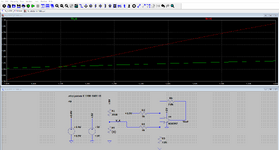engr_joni_ee
Advanced Member level 3

- Joined
- Nov 3, 2018
- Messages
- 847
- Helped
- 2
- Reputation
- 4
- Reaction score
- 7
- Trophy points
- 18
- Activity points
- 7,059
Hi, I am trying to run the simulation in LT Spice but I am not sure what is missing.
Can someone please have a look and suggest what can be done to run the simulation.

Can someone please have a look and suggest what can be done to run the simulation.



